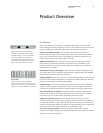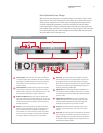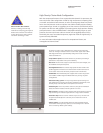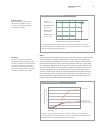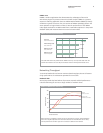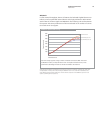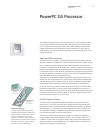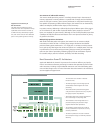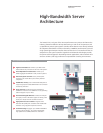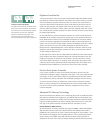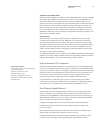
Performance Overview
Apple’s new Xserve G5 is designed to deliver phenomenal performance with industry-
leading ease of use. Thanks to 64-bit processing power, server-optimized I/O, and a
high-throughput storage architecture, Xserve G5 is optimized for demanding server
and cluster operations.
Apple compared preproduction Xserve G5 units with currently available, top-selling
1U servers. The following results are based on benchmark testing performed in January
2004 by Apple in a laboratory setting using publicly available software. These server
configurations were tested:
• Apple Xserve G5. Dual 2GHz PowerPC G5, 1GB PC3200 SDRAM, two 250GB Apple Drive
Modules, dual Gigabit Ethernet, Mac OS X Server v10.3.2.
• Dell PowerEdge 1750. Dual 3.2GHz Xeon,1GB PC2100 SDRAM, three 36GB Ultra320 SCSI
drives, dual Gigabit Ethernet, Red Hat Linux 9.0.
• IBM eServer x335. Dual 3.2GHz Xeon,1GB PC2100 SDRAM, two 36GB Ultra320 SCSI
drives, dual Gigabit Ethernet, Red Hat Linux 9.0 (unless otherwise indicated).
• IBM eServer x325. Dual 2GHz Opteron,1GB PC2700 SDRAM, two 36GB Ultra320 SCSI
drives, dual Gigabit Ethernet, Red Hat Enterprise Linux 3 (AMD 64-bit version).
For each system, Apple installed the operating system on one drive and used the
other drive or drives to create a data volume. On the Xserve and Dell systems, the
two remaining drives were configured as a single volume using RAID 0.The Xeon-
and Opteron-based systems used 15,000-rpm drives.
Processor Performance
Featuring a dual-pipeline Velocity Engine and two double-precision floating-point
units on each 64-bit PowerPC G5 processor, Xserve G5 can manage complex calcula-
tions crucial to users in image processing, media encoding, and scientific computing
environments. In fact, the Velocity Engine on dual processor Xserve G5 systems can
execute over 30 billion single-precision floating-point operations per second, or 30
gigaflops per U, compared with 19 gigaflops on the G4-based Xserve.
To demonstrate this superior processor performance, Apple tested Xserve G5 using
popular benchmarks in the scientific computing community.
LINPACK
Computers use double-precision floating-point mathematics to perform calculations
requiring great numerical magnitude or extremely high decimal accuracy. Apple used
the LINPACK benchmark to illustrate the benefits of the G5 processor’s two floating-
point units. LINPACK measures double-precision floating-point performance by running
a program that solves a dense system of linear equations.
7
Technology Overview
Xserve G5






